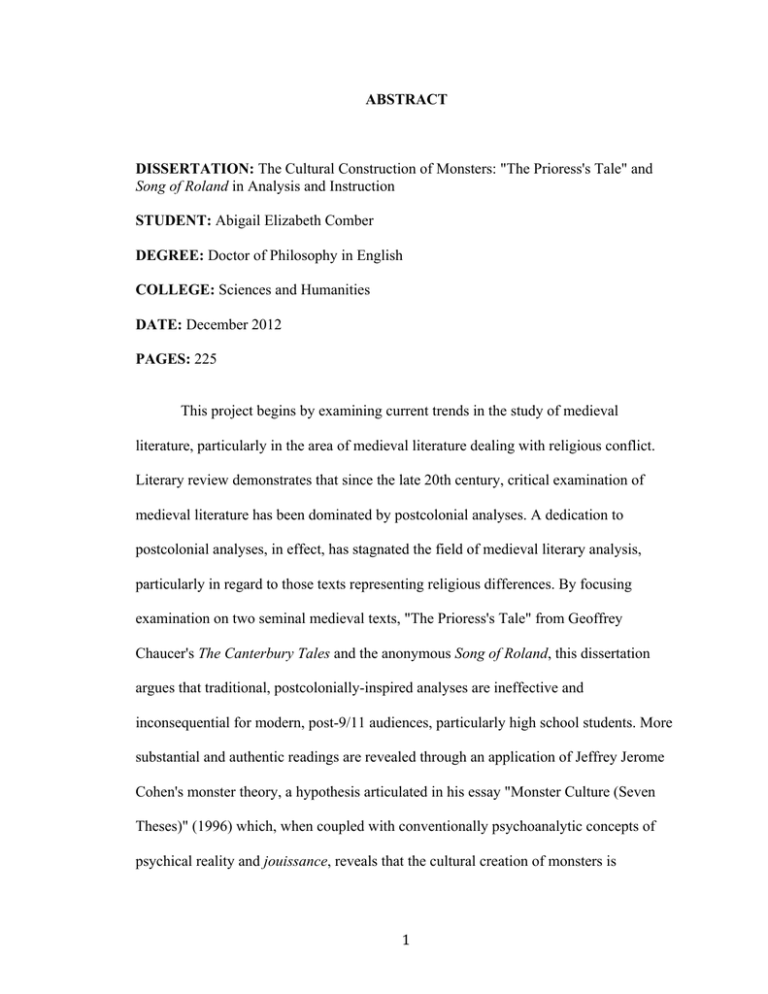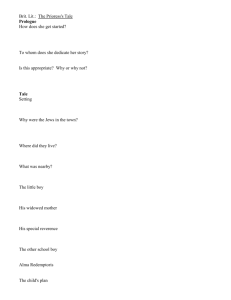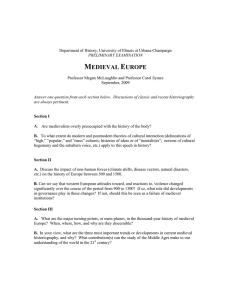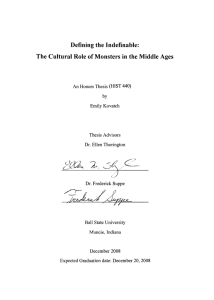This project begins by examining current trends in the study... literature, particularly in the area of medieval literature dealing with... ABSTRACT
advertisement

ABSTRACT DISSERTATION: The Cultural Construction of Monsters: "The Prioress's Tale" and Song of Roland in Analysis and Instruction STUDENT: Abigail Elizabeth Comber DEGREE: Doctor of Philosophy in English COLLEGE: Sciences and Humanities DATE: December 2012 PAGES: 225 This project begins by examining current trends in the study of medieval literature, particularly in the area of medieval literature dealing with religious conflict. Literary review demonstrates that since the late 20th century, critical examination of medieval literature has been dominated by postcolonial analyses. A dedication to postcolonial analyses, in effect, has stagnated the field of medieval literary analysis, particularly in regard to those texts representing religious differences. By focusing examination on two seminal medieval texts, "The Prioress's Tale" from Geoffrey Chaucer's The Canterbury Tales and the anonymous Song of Roland, this dissertation argues that traditional, postcolonially-inspired analyses are ineffective and inconsequential for modern, post-9/11 audiences, particularly high school students. More substantial and authentic readings are revealed through an application of Jeffrey Jerome Cohen's monster theory, a hypothesis articulated in his essay "Monster Culture (Seven Theses)" (1996) which, when coupled with conventionally psychoanalytic concepts of psychical reality and jouissance, reveals that the cultural creation of monsters is 1 unchanging across time and culture. By illustrating this phenomenon through the Christian creation of Jewish and Muslim monsters, through literary examinations of "The Prioress's Tale" and Song of Roland respectively, this project hints that the same cultural forces feeding monster creation in the Middle Ages are alive in our modern age in the creation of terrorist monsters. The project culminates by arguing that the most effective way to teach literature of the Middle Ages to post-9/11 students is to focus on literature ripe with religious conflict in order to tap into affective connections to be found between modern students and the people of the Middle Ages. This is a bond best forged through a discussion-driven approach to literary instruction. 2






